#BRM Racer
Explore tagged Tumblr posts
Text

Pedro Rodriguez in the BRM P153 at the Mexico Grand Prix 1970
#1970's#Grand Prix#Formula 1#3 litre#V12#BRM#P153#Pedro rodriguez#Mexico Grand Prix#Mexican style#racer
6 notes
·
View notes
Text
Jackie Stewart in the BRM H16

12 notes
·
View notes
Text
John Watson on the racers he knew - from Motorsports magazine
Ronnie Peterson:
Ronnie, first of all, was a good friend. He was an exceptionally quick racing driver, and one of his great skills was he could jump into anything and drive it quickly. He wasn't as adept at developing a car. Ronnie's skill was phenomenal car control, balance, natural speed, but most of all he was a genuinely lovely person. Lots of drivers have lost their lives and I've never been upset. But Ronnie's death upset me. I still feel it now.
Jody Scheckter
James Hunt called him Jonathan Livingston Seagull, after a book which is an allegorical fable about a seagull with ambitions beyond flying and scavenging with the flock. I met Jody when he came across in the early 1970s and he was wild. A high level of driver ability. In 1973 at the French GP he and Fittipaldi had a collision. He was a loose cannon then, a little like Riccardo Patrese a few years later. But following Watkins Glen that year he was transformed after being one of the drivers who stopped at the scene of François Cevert's fatal accident. What he saw had a seminal change on his outlook and philosophy of being a racing driver. He said later that it brought home to him that the sport he loved could kill. Jody wasn't someone I had much to do with in the paddock, but I'm not sure he had much to do with anybody.
Bernie Ecclestone
He made a profound impact on me, not necessarily as a team leader, but he's a pragmatic and lateral thinking person. Again, Watkins Glen 1973 and Cevert's accident... a wonderful, beautiful gut lost his life and it felt disrespectful to jump back in the car and go back out. That's what I believed, how I was brought up. And Bernie said, "Get in that car, you're here to race. Whatever happened to François it's over and what you are doing is not going to make any difference." It helped me throughout the rest of my career, when a driver was injured or killed. I was able to erect a kind of barrier around myself. It enabled me to put up a blinder to however awful or ugly it may have been, to get back into the car and race. At Niki's accident at the Nürburgring in 1976, I was one of the early cars through and I had him lying with his head on my thighs, looking into his fave and comforting him as best I could. Then I had to jump back into Mt car and do a Grand Prix. I never gave it a second thought. That was the influence Bernie had on me, to detach emotion from what is your job. If you can't do it, get out. Later I had the same thing with Gilles Villeneuve at Zolder. I saw his body in the catch-fencing. I looked in his eyes and the lights had gone out. I got back in the car, drove back to the pits, told Teddy Mayer and John Hogan, and went for a coffee. Nothing. If a psychologist heard me say that, they would claim there is something wrong with me, to have that high level of detachment. But soilders, firefighters, the police - they need such mechanisms. You have to find what works best for you. That was Bernie's influence on me.
Niki Lauda
The Niki of the 1970s was very driven, very focused and very ambitious. He had a vision of where he wanted to be and how to get there. When he drove for March initially it wasn't a particularly good car, then he jumped ship to BRM and did an extremely good job. Monaco in 1973, he was outstanding. But he saw through Louis Stanley and realised the team was essentially going nowhere. He needed to move on to a better place, and he's done enough to attack Ferrari's interest. He formed relationships with key people in the team who become 'your' people. He did that with Mauro Forghieri and Luca Di Montezemolo and might have won the world title in 1974, but was going through a process of learning how to get there. By 1975, with the car he then had, he had done all his learning.
James Hunt
James was a pure animal, a pure athlete. He turned out to have a lot of skill, probably against many people's expectations. I saw him first in 1973 in the March at Monaco where he did a brilliant job. He was a bit of a contradiction in many respects because he seemed to have all the ability and skill, and a huge amount of intelligence as well which is fundamental. He was also a caged animal that needed to be controlled and some teams, principally McLaren, saw how to do that, holding him back and the lighting the blue touch paper and letting him go. What Teddy Mayer realised in 1976 was, don't let James screw around with the car, just get a good balance and throw rubber at it. James was like a lion trying to eat you alive. Bang, out he'd go and he'd deliver incredible laps. The other thing about James, in spite of his off track behaviour, he was a fit guy who played a lot of sports at very high level as an amateur. He was mercurial in that second half of the 1976 season. OK, he had a very good car in a very good team, but he dragged out every last ounce of performance from that car.
#classic f1#f1#niki lauda#formula one#formula 1#vintage f1#james hunt#bernie ecclestone#ronnie peterson#jody scheckter#john watson
26 notes
·
View notes
Text

The 1965 Lotus-Ford that Jimmy Clark drove to the 1965 Indianapolis 500 Championship.


Jim Clark was a 2 time F1 World Champion and Indy 500 Champion
Jim Clark died because he was in the wrong place at the wrong time. On 7 April 1968, Clark should have been at Brands Hatch giving the DFV-engined Ford F3L its debut in the BOAC 500 sports car race. But he had been double-booked that weekend, and instead spent it at Hockenheim in Germany for a big European F3 meeting where Lotus was fielding its works team, to oblige sponsors Firestone.
Clark was a sheep farmer from the Scottish Borders who had started competing in sprints in his Sunbeam Mk3 saloon in 1956. He won his first event. He raced friend Ian Scott Watson’s DKW Sonderklasse and Porsche 356 1600 Super before graduating to a Jaguar D-type run by the Border Reivers team.
In 1958 Scott Watson bought one of the first Lotus Type 14 Elites, and at the Boxing Day Brands Hatch race meeting Clark had Lotus founder Colin Chapman in his own Elite all but beaten, until a backmarker spun in front of him.
Clark’s smoothness and mechanical sympathy meant he could often get a Lotus to last a race distance where other drivers could not
By 1960 Clark was a Lotus F1 driver, and he won his first championship race at Spa in 1962. It was one of three wins that year, leaving him in contention for the world championship at the final race of the season in South Africa – but his Lotus failed him, and BRM driver Graham Hill was crowned champion.
There was no mistake the following year. Clark won seven of the 10 races in 1963 – the most any driver had won in one season – and took his first world championship win in dominant style.


Chapman was renowned for building cars that were as light as possible, but often their reliability was suspect. Clark’s smoothness and mechanical sympathy meant he could often get a Lotus to last a race distance where other drivers could not, but it didn’t always work out: in 1964 a strong of retirements robbed him of the chance to defend his F1 title. He was back in 1965 with the new Lotus 33, and six race wins guaranteed him his second world championship.
Graham Hill joined Lotus for 1967 – typically, Clark insisted they were both paid the same salary – and carried out much of the development work on the new Cosworth DFV engine. It was obvious that the DFV-powered Lotus 49 was the class of the field at its debut race at Zandvoort, so Hill and Clark tossed to decide who would win. Hill won the toss, but his car expired, leaving Clark to win – in a car he had never seen before that weekend.
Clark had immense natural ability: he often struggled to understand why other drivers couldn’t keep up
Arguably his greatest race came in the 49 at Monza later that year when he suffered a puncture while leading. The pit stop to change the tyre left him a lap down but he fought past the leading group to unlap himself, belying some commentators’ opinions that Clark wasn’t a racer, and was only any good when controlling a race from the front. He lapped faster and faster, caught up an entire lap, and passed the front-runners again to re-take the lead. But the epic win was not to be: the Lotus ran out of fuel with a couple of laps to go, and John Surtees won in the ‘Hondola’ RA300.
Clark had immense natural ability: he often struggled to understand why other drivers couldn’t keep up. When he had a big enough lead he would keep himself amused by setting the car up in a big slide for the benefit of trackside photographers. His feel for the car was legendary: driving the Lotus 49 for the first time at Zandvoort in 1967 he was convinced something wasn’t right with the car, though there was nothing obvious amiss. But when Team Lotus tore down the car overnight they found one of the wheel bearings was just starting to fail.
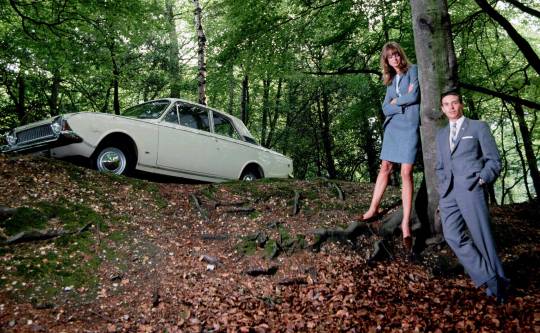
Clark won the first F1 championship race of the 1968 season in South Africa, where he beat Juan Manuel Fangio’s all-time record of 24 world championship Grand Prix victories. He was well-placed to win more F1 races and maybe become champion again in 1968, but then came Hockenheim…
His Lotus 48 F2 car was up against a strong international field and Clark was running eighth after the first four laps. On the fifth lap the Lotus headed uphill out of the stadium section of the course and into the woods, was seen to twitch, and flew off the road into the trees. Though the cause of the accident was never established beyond all doubt, it’s likely that a rear tyre failed, possibly due to debris from a previous incident. The Lotus hit a tree, and Clark died from a broken neck and fractured skull. He was just 32.
The whole motor racing community was numb. At Brands Hatch the news was announced to a stunned crowd. Colin Chapman was so destraught he considered giving up motor racing for good. Chris Amon, one of the greatest drivers of his era, summed up the general mood among the drivers by saying if this could happen to Clark, “What chance have the rest of us got?”
The shockwaves from his death were felt not just in Europe, where Clark was a superstar in F1 and touring car racing, but also in the US. Clark had been denied victory in the Indy 500 in dubious circumstances in 1963 but returned, and dominated the race, in 1965 – becoming the first F1 World Champion to win at the Brickyard.
But for a few quirks of fate, Clark could have been F1 champion 1962-1963-1964-1965-1968 and might even have gone on to race and win in the slicks-and-wings era of the early 1970s, which brought two world titles for the Lotus 72. He was, without doubt, one of the greatest drivers ever to race in F1.
Family and community meant a lot to him: his gravestone in Chirnside lists his occupation as ‘farmer’ before ‘World Champion motor racing driver’.
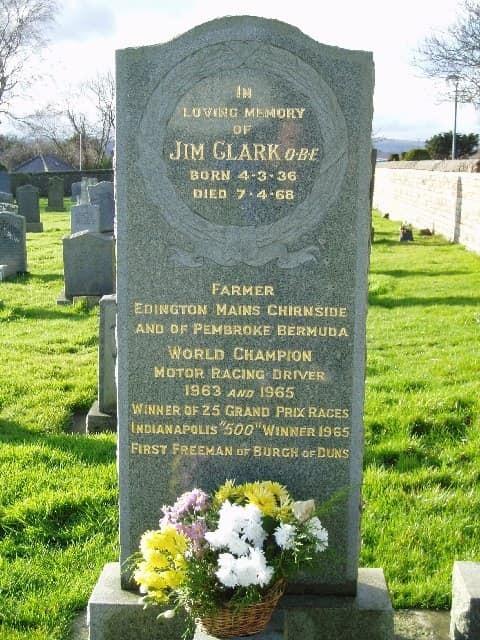
Jim Clark's grave in Chirnside, Scotland.

Jim Clark – winner 1968 Australian Grand Prix at Sandown, Melbourne.

In 1967, Lotus and Cosworth were reshaping the sport of Formula 1 with the assistance of Jim Clark and Graham Hill.

Jim Clark - Lotus 25 - French GP (1965)
French GP, Clermont Ferrand, 27 June 1965 .Winner Jim Clark, Lotus 33 in practice(he raced Lotus 25)
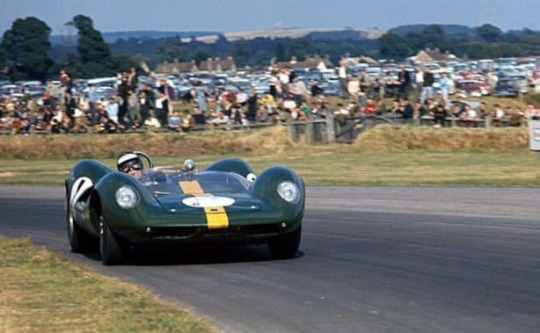
1964 Goodwood TT, Jim Clark, Lotus 30 Ford

The Flying Scotsman Jim Clark
91 notes
·
View notes
Text
Did you know?
Helmut Marko is one of the reasons the visors on f1 helmets are basically bulletproof?


The now Red Bull advisor used to be a racer, and even won the 24 hours of Le Mans twice before joining Niki Lauda in BRM.
However, in the 1972 French Grand Prix, he was hit in the visor by a stone that was projected towards him from Ronnie Peterson's car.
The stone went right through the visor and into his left eye, but fortunately, Marko was able to stop his car safely and prevent further accidents, before shouting for help and losing consciousness.

His eye could not be saved, and his racing career ended there, but he remained well known in recent decades for his presence in Red Bull's garage, his lost eye long replaced by a glass copy.
This was one of the incidents that led to new regulations enforcing thougher visors and not just clear plastic.
#helmut marko#stories#trivia#just think it's kinda quirky that a guy named helmut led to more helmet safety in a way
5 notes
·
View notes
Text
2023 Revival to host first ever all-synthetic fuel race at Goodwood as full schedule confirmed
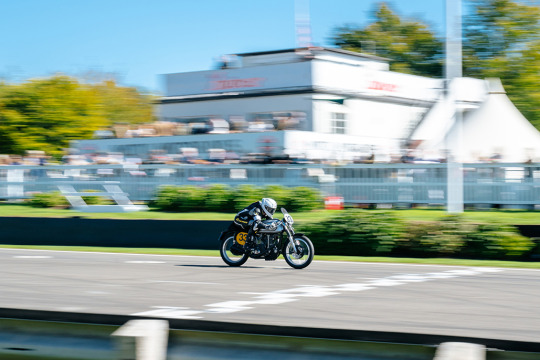

In what is already a seminal year for motorsport at Goodwood as we celebrate 75 years of the Motor Circuit, 30 years of the Festival of Speed and 25 years of the Revival, we are delighted to announce that this year’s Revival will host an all-synthetic fuel race - the first of its kind. Taking place over the weekend, the Fordwater Trophy will see a grid of 30 pre-66 Porsche 911s take to the historic Goodwood Motor Circuit - for the first ever all-synthetic fuel race in its 75-year history. The Revival race list is completed by a further 14 races for everything from pre-war Grand Prix cars to sportscars of the early 1960s; the races join the previously-announced Carroll Shelby Centenary and 75 years of Lotus celebrations. Fordwater Trophy - Porsche 911s Continuing our celebrations for the 60th anniversary of the legendary Porsche 911 from the 80th Members’ Meeting, Revival will see a race for 30 of the racing classics. New for this year, each car will run wholly on synthetic fuel as we see a spectacular on-track battle for the trophy. Rudge Whitworth Cup - Celebrating the centenary of Le Mans 24 Hours New for 2023, the Rudge Whitworth Cup will pay homage to the Le Mans 24 Hours, which celebrates its centenary in 2023. With a grid full of Bentleys, Alfa Romeos, Bugattis and more from the world’s greatest test of endurance, this two-driver race will feature sportscars from the very first years of Le Mans. Freddie March Memorial Trophy - The Goodwood Nine Hour Icons! The Freddie March Memorial Trophy has been a mainstay of the Goodwood Revival for many years with its mixture of stunning sports cars from the days of the Goodwood Nine Hours. As 2023 marks the 70th anniversary of the 1953 event, the Freddie March Memorial Trophy will run as our two-driver sunset race on Friday evening. Expect to see the likes of the mighty Jaguar C-Type, Aston Martin DB3S, Jaguar XK120, Frazer Nash and Austin Healey go head-to-head. Goodwood Trophy - Grand Prix and Voiturette cars from the 30s and 40s A firm-favourite amongst spectators, the Goodwood Trophy will host an impressive collection of Grand Prix and Voiturette cars from the 1930s and 40s. The Revival’s oldest race will again see the cars that raced at Goodwood when the Circuit first opened do battle on the track. Expect to see cars from ERA, Maserati, Alta and many more.
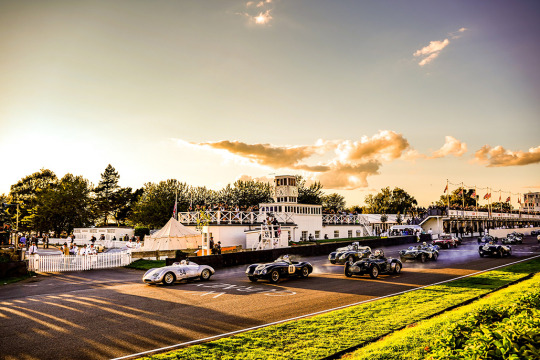
Barry Sheene Memorial Trophy - Grand Prix motorcycles from the 1960s Probably the most nail biting of all the races at Revival, the Barry Sheene Memorial Trophy will host a battle of 1960s Grand Prix motorcycles. Expect riding legends from the world of British Superbikes, MotoGP and the Isle of Man TT to race in this pair of two-rider tussles. St Mary's Trophy - Saloon 1950s cars Bringing the touring car battle to the Revival, the St Mary’s Trophy will host everything from Austin A40s to Jaguar MkIs and Alfa Romeo Giuliettas. Similar to the Barry Sheene Memorial Trophy, the St. Mary’s Trophy switches decade each year, meaning that in 2023 it will be a collection of 1950s saloon cars taking the track by storm. Glover Trophy - 1.5-litre Grand Prix cars from 1961-1965 The Revival’s most up-to-date Formula 1 race must be one of the most anticipated tests of the historic motorsport season. Today, the Glover Trophy celebrates legendary racers including Jackie Stewart, Jim Clark and Graham Hill, with the kinds of cars they raced at the time: Lotus 25, BRM P261, Ferrari 1512. Lavant Cup - Ferrari GTs of 1960-1966 Paying homage to 60 years since Graham Hill won the RAC TT at Goodwood behind the wheel of a Ferrari 250 GTO, the Lavant Cup will welcome an entire grid of 1960s Ferrari GTs to the 2023 race schedule. Expect eye-wateringly beautiful GTOs to go up against the likes of 250 SWBs and 250 LMs in what may very well be the last time some of these cars race competitively. Chichester Cup - Formula Junior cars from 1960-1963 These tiny, yet agile racing machines will put on a magnificent battle as the likes of Lotus and Cooper go head to head. Formula Junior cars play an important part in motorsport history - the cars on track will mimic those driven by the racing stars of the 1960s and 1970s. Richmond & Gordon Trophies - 2.5-litre Grand Prix cars from 1952-1960 A race from the era that changed Formula 1 forever and the larger-engined Grand Prix cars of the later 1950s. This was the period where front-engined and rear-engined cars shared a grid, as Cooper’s backward innovation began to change the face of single-seater racing forever. The Richmond & Gordon Trophies will feature both front and rear-engined Formula 1 cars as they battle much like they did back in the 20th century. RAC TT Celebration - closed-cockpit GT and prototype cars from 1960 to 1964 Celebrating the period where flagship RAC TT racing was held at Goodwood, the RAC TT Celebration is at the very centre of historic motorsport for Goodwood. Heading into battle will be lightweight Jaguar E-Types, Cobras, Corvette Sting Rays, Porsche 904s, and more alongside a host of VIP stars. Whitsun Trophy - Sports-prototypes from 1960-1966 The fastest race of the Goodwood Revival weekend returns again with a mixture of Can-Am cars, Ford GT40s and other big-engined racers from the end of Goodwood’s active period. Together they look - and sound - incredible as they dice on the sweeping confines of the Goodwood Motor Circuit. Sussex Trophy - World Championship sports cars from 1955-1960 Filled with the likes of the beautiful Ferrari 246S Dino, Lister Knobblys and Lotus 15s, the Sussex Trophy never fails to entertain, with recent races going right down to the drag out of the Chicane to decide the winner. As the sun begins to set on the Revival’s weekend these beauties of sports car racing’s early heyday will keep everyone from leaving early heyday will keep everyone from leaving early, making it the perfect curtain closer on a brilliant three days of motorsport. Further announcements about the Goodwood Revival will be made in the coming months. For more Goodwood Festival of Speed and Goodwood Revival check out our Shows dedicated page Goodwood Festival of Speed and Goodwood Revival Show News or head to official Goodwood Festival of Speed and Goodwood Revival website https://www.goodwood.com/motorsport/ Read the full article
4 notes
·
View notes
Photo

Got a nice box full of goodies in the mail today
#Matchbox#Matchbox Series#Lesney#Regular wheels#Matchbox Regular Wheels#Chevy Impala#BRM Racer#Ford GT#Ford GT40#Stake Truck#antique#Mercury Villager#mine
23 notes
·
View notes
Text


Happy birthday JACKIE STEWART!!!!!!!!!!!! (11/06/1939) ⚡
“It's not always possible to be the best, but it's always possible to improve your own performance.”
John Young Stewart, known as 'Jackie', was born in Milton, a village near Glasgow. Jackie's family had a successful car delearship business, where initially they sold mainly Austins and later changed to Jaguars; he had a brother, Jimmy, who was a racing driver who drove for Ecurie Ecosse and competed in the 1953 British GP at Silverstone, his father too was involved in motor racing, he had been an amateur motorcycle racer. Let's say that racing was in Jackie's blood. While attending the Dumbarton Academy, at the age of 12, he started experincing learning difficulties, owing to undiagnosed dyslexia (in 1980 he will get officially get diagnosed with dyslexia after his son Mark was diagnosed with the condition), you might know that in the past this kind of 'disorders' weren't understood or even widely known at the time, which sadly led to him getting regularly humiliated by teachers and fellow class mates for being 'dumb'; unable to continue his secondary education past the age of 16, Jackie began working in his father's garage as an apprentice mechanic. He excelled in shooting sports: at the age of 13 he had won a clay pigeon shooting competition and then went on to become a prize-winning member of the Scottish shooting team, competing in the United Kingdom and abroad, he won the British, Irish, Welsh and Scottish skeet shooting championships and twice won the "Coupe de Nations" European championship.
In 1961 he took his first steps in motor racing: Barry Filer, a customer of the family business, offered the young Scot to test in a number of his cars at Oulton Park; he later followed his brother Jimmy's lead and entered racing in a Marcos sports car, the following year he decided to become a professional driver. In 1964, after a series of successful races in the Ecurie Ecosse team, Ken Tyrrell, that at the time was managing the Formula Junior Cooper team, decided to sign up the fast and talented Scot, in the Formula Junior team, that later lead to his debut in F1.
Jackie's debut in F1 was during the 1965 South African GP racing for the BRM team, he finished 6th, scoring his first point in his racing career; after only seven races he was already a Grand Prix winner, winning the Italian GP followed by his BRM teammate Graham Hill. After almost winning the 1966 Indianapolis 500 at his first attempt, his f1 season turned out to be characterized by the unreliability of the BRMs (even though he won the Monaco GP) and his bad accident at the infamous Spa franchamps race track, which triggered his fight to improve the safety in racing. But in the 1967 f1 season the BRMs reliability didn't improve much, and overall was an unsuccessful season. Following the successes at various F2 events where he drove for Tyrrell, in 1968 he joined Tyrrell's Matra International team, but what seemd to be a promising season, quickly all changed: he suffered an F2 injury (he missed two gps) and an engine failure at the last gp, losing the championship to Graham Hill.
The 1969 season was characterised by the Scot's complete domination, by winning the Spanish, French, British, South African, Dutch and Italian GPs, finally becoming world champion; two years after he won his second championship, once again dominating throughout the season. After having a try in the Can-Am series in 1972,the frequent travelling caused Jackie a gastritis, that season he only missed the Belgian gp and managed to race in other series too. Following the stress and the various medical issues, Jackie decided that at the end of the '73 season he would have retired, but unfortunately that happened earlier than he programmed, due to the fatal accident of his teammate and close friend, François Cevert. Jackie ended up winning the championship nonetheless, having won it already at the Italian gp.
After retiring from the sport he became a commentator for ABC, covering F1 races, NASCAR races and the Indianapolis 500.
Till to this day, Jackie is still around wandering through the F1 paddocks.
#jackie stewart#classic f1#f1#formula 1#retro f1#f1 1960s#f1 1970s#f1_bdays#i know that jackie was nicknamed the 'flying scot' but whenever i read that my mind immediately goes to jim lol#for ME jim is the flying scot 🤭
29 notes
·
View notes
Photo
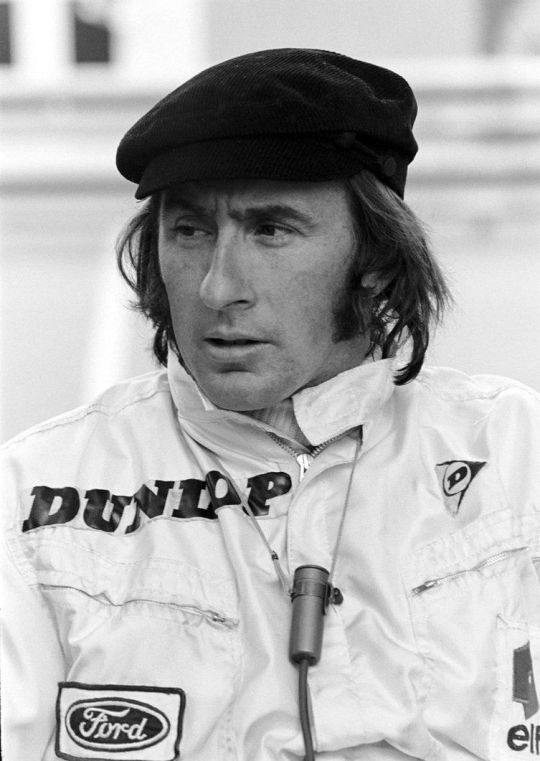


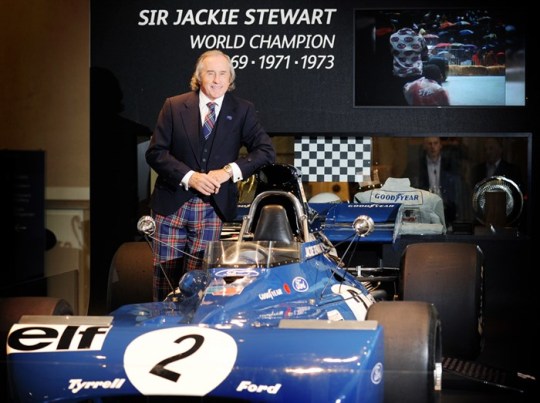
Happy 81st Birthday,retired Formula One champion, Jackie Stewart,born in Milton, Dunbartonshire,June 11 1939.
Stewart's family were Austin, later Jaguar, car dealers and had built up a successful business. His father had been an amateur motorcycle racer and his brother Jimmy was a racing driver with a growing local reputation who drove for Ecurie Ecosse and competed in the 1953 British Grand Prix at Silverstone.
Jackie attended Hartfield primary school in the nearby town of Dumbarton, and moved to Dumbarton Academy at the age of 12. He experienced learning difficulties owing to undiagnosed dyslexia, he was not actually diagnosed with dyslexia until 1980, when his oldest son Mark was diagnosed with the condition. On learning that dyslexia can be genetically passed on, and seeing very similar symptoms with his son that he had experienced himself as a child, Stewart asked if he could be tested, and was diagnosed with the disorder, by which time he was 41 years old.
After his brother was injured in a crash at Le Mans the sport was discouraged by their parents and Jackie took up shooting. In target shooting Stewart made a name for himself and almost made it to the Olympics only just missing the team for 1960. The pull of the track was too strong for Stewart however so he followed his brother Jimmy, into racing. Whatever the reason, his early races for Ecurie Ecosse demonstrated that he was special. Ken Tyrrell placed him in his Formula Three car and victories soon followed. He was pressed to sign for Lotus for 1965 but he turned them down and joined BRM instead.
Very few drivers win races in their first season of Formula One, but Stewart did, triumphing on his eighth outing, the Italian Grand Prix, which helped him end up third overall behind Jim Clark and team-mate Graham Hill.
He kicked off 1966 in the best possible style by winning at Monaco. However, the BRM was not competitive again as Brabham took control and Jackie did not win again until the 1968 Dutch Grand Prix, when he was reunited with Tyrrell. Six years out of Stewart's nine-year spell in Formula One were spent driving for Tyrrell. At first this was in a Ford-powered Matra, and the engine powered him to three victories in 1968. The combination's second year was even more successful, with Stewart winning six races and the title - the sixth for a Briton since Graham Hill won it in 1962.
In 1970, the Matra was replaced by a March, but he could not live with Jochen Rindt's Lotus or the Ferraris. So, in 1971, Stewart went and did battle in a Tyrrell chassis. Perfecting the art of driving a storming opening lap and then controlling the race, he won six times in 1971.
The following year yielded four wins, but he was beaten to the title by Lotus' Emerson Fittipaldi. Then, in 1973, he had five wins in the bag when he reached Watkins Glen, intending for this to be his final race. After the death of team-mate François Cevert in qualifying, Tyrrell withdrew his entry. His record of 27 grand prix wins (from 99 starts) was to stand until beaten by Alain Prost in 1987 (in his 118th start).
15 notes
·
View notes
Text
Watch "F1's first AWD racer vs Ferrari, Maserati and BRM legends" on YouTube
youtube
3 notes
·
View notes
Text

BRM
4 notes
·
View notes
Photo
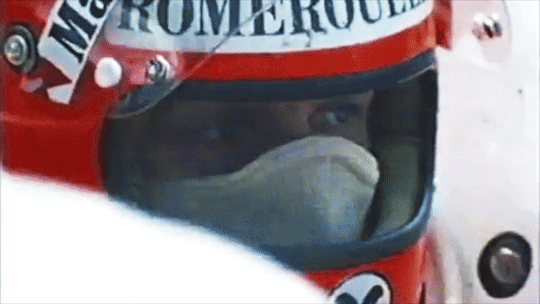
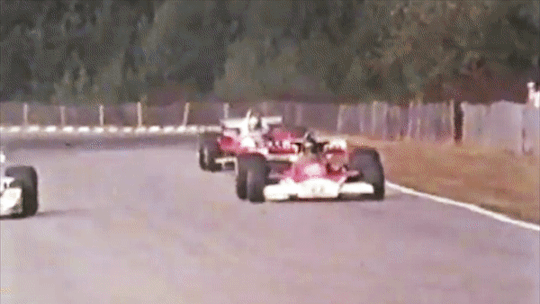
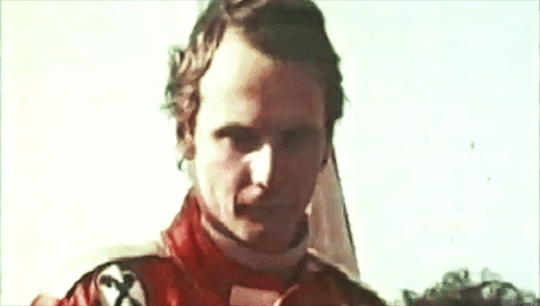
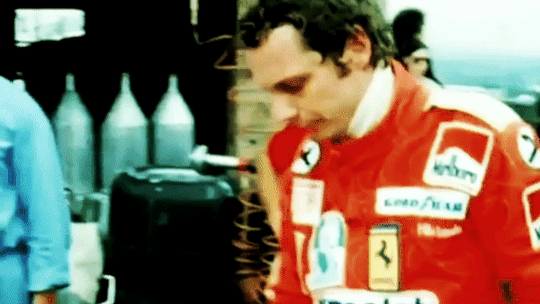

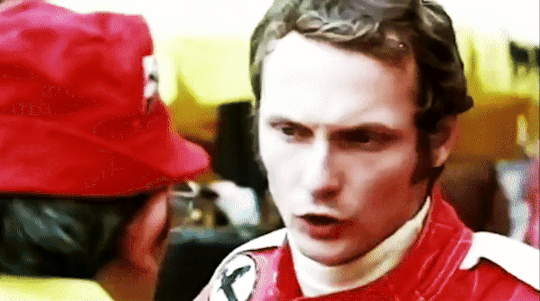

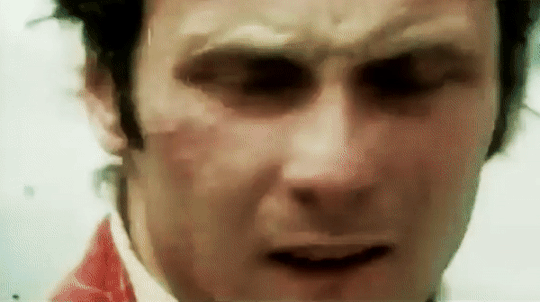
Endless List of Favorite Past Formula 1 Racers: March, BRM, Ferrari, Brabham & McLaren | Niki Lauda (1971 - 1979, 1982 - 1985)
“Giving up is something a Lauda doesn’t do.”
- Niki Lauda
137 notes
·
View notes
Text
The Eagle has Landed
The Eagle has Landed
Here we are during practice for the Monaco Grand Prix which took place on May 7, 1967. Seen in the pits is Dan Gurney in his All American Racers Eagle-Weslake with its Weslake Engineering-built 3 liter V12 motor. This motor had been designed to Gurney’s order by Aubrey Woods who had worked for BRM and would do so again after his Weslake period. Standing to the right of this photograph is the…

View On WordPress
0 notes
Text
A Rare (And Unusual) 1961 Dolphin America Sports Racer
A Rare (And Unusual) 1961 Dolphin America Sports Racer
This is the somewhat unusual-looking Dolphin America Sports Racer, it’s an American-built car that was developed by a team including future Shelby driver Ken Miles and British chassis designer John Crosthwaite who had worked for Lotus, BRM, Mickey Thompson, and Cooper. Despite the small size of the firm, Dolphin Engineering Company had a significant impact on the Californian racing scene in the…

View On WordPress
0 notes
Text
From BRM to Supermarine Spitfire: celebrate British legends at Classic Nostalgia

- New P15 V16 will lead tribute to BRM’s 1962 F1 World Championship - Owen family set to showcase a collection of more than 20 historic BRMs - Special guests include BRM aces Richard Attwood, Howden Ganley and Mike Wilds - Flypast by the Battle of Britain Memorial Flight on Saturday and Sunday - Legendary ERA R4D will return to Shelsley Walsh - Plus live music, family entertainment, C&SC concours and more!
With less than 3 weeks to go until this year’s Classic Nostalgia weekend, organisers have announced more details of what is sure to be an unforgettable weekend at Shelsley Walsh.
The flagship event returns to the famous Worcestershire hill climb on 16-17 July, and will feature a major celebration of BRM’s victory in the 1962 Formula 1 World Championship. Secured by Graham Hill’s win in the season-ending South African Grand Prix, it was the first time that a British driver had won the Championship in an all-British car, and no fewer than 20 BRMs and BRM-engined cars will be at Shelsley Walsh in order to mark the historic occasion. Eight of those will take part in parades up the hill, led by the first of the continuation P15s. The sound of its 1.5-litre V16 engine reverberating around the Teme Valley is sure to be a highlight. Also confirmed for Classic Nostalgia are the National Motor Museum’s original P15 V16 Mark I, plus the ground-breaking Rover-BRM gas-turbine car that competed in the Le Mans 24 Hours in 1963 and 1965. They will be joined by an ex-Graham Hill P48 that enjoyed considerable success at Shelsley Walsh in the hands of six-times British Hillclimb Champion Tony Marsh. On 27 August 1961, Marsh drove this very car – chassis number 48/4 – to a new hill record of 34.41 seconds. There will also be an example of BRM’s final front-engined Grand Prix car – the handsome P25 – plus a Cooper-BRM Formula 2 car and the Willment-BRM sports-racer. One of the extremely rare BRM-tuned Lotus Elan road cars – brainchild of Formula One ace Mike Spence – will be at Classic Nostalgia too, as will a Hillman Avenger BRM rally car and the monstrous P154 which raced in the Can-Am series by Mexican ace Pedro Rodriguez. Special guests will include members of the Owen family, which backed BRM via the industrial might of Rubery Owen, plus former drivers Howden Ganley, Richard Attwood and Mike Wilds. Team members Dick Salmon – who worked with the likes of Juan Manuel Fangio, Mike Hawthorn and Graham Hill during his long BRM career – John Sismey and Ben Casey will also be at Shelsley Walsh. Celebrating BRM A blue plaque will be unveiled on Sunday 17 July to honour BRM’s historic success, and will be a permanent feature directly beneath a similar plaque celebrating the achievements of Raymond Mays. Having founded ERA during the 1930s, patriotic racer Mays went on to establish BRM following World War Two – and the most famous of his ERAs will be returning to its spiritual home. R4D has a special place in the affections of enthusiasts, and in Shelsley history. It was effectively a works development car and was built in 1935 as R4B, before being upgraded to a C-type specification a year later. It finally became R4D when a lighter chassis was introduced for 1938. Mays extensively campaigned R4D either side of the war, and it set Best Time of the Day at Shelsley 16 times between 1935 and 1956. It will return for Classic Nostalgia with Ben Fidler behind the wheel. Battle of Britain Memorial Flypast Everyone’s attention will turn to the skies above Shelsley Walsh as the Battle of Britain Memorial Flight stages an evocative flypast on both days of the Classic Nostalgia weekend. On Saturday, its fabulous Avro Lancaster will be rumbling overhead and treating visitors to the unmistakeable noise of its four Rolls-Royce Merlin engines, and it will be followed on Sunday by the iconic Supermarine Spitfire. The Battle of Britain Memorial Flight has as its motto ‘Lest We Forget’, and its mission is not only to commemorate those who have fallen in service of their country, but also to inspire and educate future generations Great cars, famous names Back at ground level, Ian Barkaway will take to Shelsley Walsh aboard the Metro 6R4 that was driven by the late, great Colin McRae on the 2006 Donegal International Rally. Barkaway will be giving competition prize winners a blast up the hill in the V6-engined pocket-rocket – raffle tickets cost just £2 each and are available to purchase from the Midlands Air Ambulance stand. The raffle will be drawn each day at 3pm, and all proceeds will be donated to the Midlands Air Ambulance. Gregor Marshall – son of tin-top legend Gerry – will be taking part in a special parade featuring several notable cars from his father’s long career. Gregor will take to the hill in the Austin Cooper S that won its class in the 1965 Snetterton 500km, alongside a Group 1 Vauxhall Magnum and the fearsome Magnum Super Saloon known as the John Pope Special, which is fitted with a twin-turbocharged Aston Martin V8 engine! Ralli22 will be returning to Shelsley Walsh with a selection of Group A, Group B and WRC machinery, while triple Motoring News, BTRDA and Welsh Championship-winning rally driver Mick Briant will be reunited with his 1969 Ford Escort Twin Cam. The all-new Ecurie Ecosse LM-C will make its Classic Nostalgia debut, where chassis number EE001 can be seen in action for the first time with Mike Wilds behind the wheel. Visitors will also be able to see two cars owned by record-breaking legend Donald Campbell – his 1958 Jaguar XK 150 and a 1934 Derby Bentley – and the prototype Surtees TS15 Formula 2 car will be driven by Ian Skinner, who was a mechanic for John Surtees for more than 35 years. Stephen Hepworth will demonstrate the four-wheel-drive Hepworth FF, more than half a century after his father David became the first driver to break the 30-second barrier at Shelsley Walsh, and an ex-Elio de Angelis 1979 Shadow DN9B Formula 1 car will also be tackling the 1000-yard hill. Classic & Sports Car Concours d’Elegance On Sunday, the popular Classic & Sports Car Concours d’Elegance will return to Classic Nostalgia. It is open to all cars built before 1985, and the judging will be headed up by motoring journalist and regular Shelsley Walsh competitor Simon Taylor. He will be joined by John Mayhead, classic car valuations expert from event partner Hagerty, plus Alastair Clements, editor of Classic & Sports Car magazine. Entries are welcome from any concours-worthy car, with priority given to those with significant provenance and rarity. There will be four classes to be judged: Pre-World War Two, 1949-1959, 1960-1985 Saloons, and 1960-1985 Sports/GT, plus a Spirit of the Day award for an entry that may not be in top concours condition but is outstanding in its own special way. First, second and third in each class will get to parade up the hill. The overall winner receives a silver salver on the start line, a Classic & Sports Car magazine subscription, and is invited to display their car on the Midland Automobile Club’s stand at the Lancaster Insurance Classic Motor Show, NEC Birmingham in November. Advance booking recommended to guarantee a place in the Concours. For more information, click here Enter your pre-1985 classic There will be preferential ‘pole position’ parking for all pre-1985 vehicles – allowing owners to pre-book a place right at the heart of the event. For more information, click here Car clubs Classic Nostalgia has become a firm favourite for car club gatherings, and this year more than 30 clubs have registered their attendance. Several will be commemorating significant anniversaries within their display areas, including Club Alpine Renault, which will be marking the centenary of Alpine founder Jean Rédélé. The MGB Register, meanwhile, will celebrate the 60th anniversary of the MGB. All registered clubs get to have their own designated display area in the heart of the event, and trophies are awarded for Best Car Club Stand. For more car club information, click here Who doesn’t love a party? Get your dancing shoes on for a party in the Courtyard with live bands throughout the weekend – from swing, rock ’n’ roll, rhythm and blues, and Motown to a Beatles tribute act! Something not to be missed is the Ken Fox Wall of Death stunt show, which will be making its Shelsley Walsh debut. As seen on Channel 4 with Guy Martin, the Fox family have been touring and entertaining since the 1920s with their Wall of Death. The riders perform incredible stunts and acrobatics around the 20ft vertical wall on their vintage Indian Scouts. The noise, the speed, the smell and the proximity of the bikes to the top of the wall – barely six inches from the audience – is breath-taking. Trade stands In addition, there will be a fashion competition for the best and most authentic vintage outfit, as sponsored by Piston Gin, and trade stands selling everything from clothing and accessories to motoring books, art, photography and memorabilia. Admission Date: Event address: Ticket price: 16-17 July 2022 Shelsley Walsh, Worcester, WR6 6RP Visiting car club/classic car owners day entry £15, weekend £30. General admission £20 per adult in advance or £25 on the gate. Children under 16 free Times: Website: 8am each day, until approx 5pm www.classicnostalgia.co.uk Please note: no dogs allowed The perfect venue First used in 1905 and in continuous use ever since, Shelsley Walsh is the oldest motorsport venue in the world that still features its original course. Known throughout the motoring world for its unique atmosphere, Shelsley allows enthusiasts to get close to the action as well as the cars and drivers. General admission tickets for Classic Nostalgia are ‘access all areas’, allowing visitors to walk around the paddock and soak up the wonderful atmosphere. Media Contact Read the full article
0 notes
Text
BRM P15 V16 historic racer revival is half banshee, half flamethrower
BRM P15 V16 historic racer revival is half banshee, half flamethrower
A year ago, British Racing Motors (BRM) announced it was producing three continuation P16 race cars, which campaigned in Formula One in the early 1950s. What BRM didn’t say was that it was already a year into the creation of the first, which is now ready for its first owner. English restorers Hall & Hall have spent two years re-creating the single-seater and its 1.5-liter supercharged V16 engine…

View On WordPress
0 notes